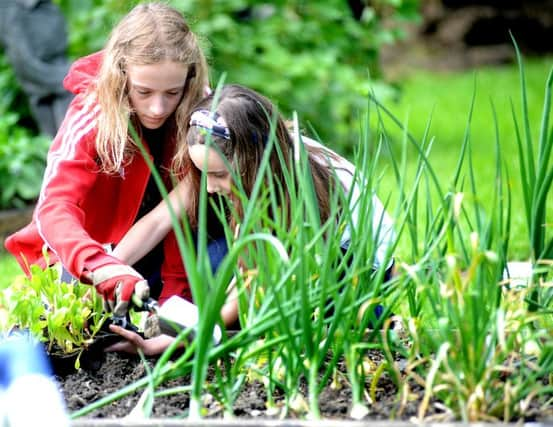Know your onions


Onions need a sunny, sheltered site with fertile, well-drained soil. Avoid planting them in freshly-manured ground as this can lead to rotting.
Onions are best suited for growing in the open ground, but you could grow a short row or two in large, deep containers or raised beds where they can produce decent roots. They are not suitable for growbags.
Advertisement
Hide AdAdvertisement
Hide AdPlant onion sets 10cm (4ins) apart in rows 30cm (12ins) apart from mid-March to mid-April. Gently push the sets into soft, well-worked soil so that the tip is just showing, and firm the soil around them.
Birds can pull up the sets – so carefully remove the loose skin at the top of the sets before planting them. After that, water when necessary and weed religiously.
Onions aren’t without problems – white rot is a soil-borne fungus that can cause yellowing and wilting of the foliage above ground, while rotting the roots and invading the bulb. A white fluffy fungus appears on the base of the bulb and later becomes covered in small black structures.
There is no chemical cure for onion white rot when it is the soil so it is important to avoid introducing it . It is transported in contaminated soil, for example on tools or on muddy footwear.
Advertisement
Hide AdAdvertisement
Hide AdOnion downy mildew is another fungal disease that damages foliage and bulbs, resulting in poor yields. It is a particular problem in damp conditions.
Avoid problems by making sure there is plenty of light and air around plants by sowing or planting them with plenty of space between them, and by regular weeding. Avoid overhead watering if possible. Infected leaves can be removed.
Onions can be harvested when the foliage turns yellow and starts to topple over. Leave them for two to three weeks and then carefully lift the bulbs out with a garden fork.
Onions for storage need to be firm, disease-free and then dried for two to three weeks, either laid out in the sun or in a shed if the weather is wet.
Happy eating.